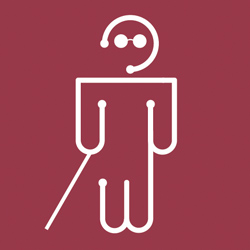Summary
Over the past decade technology industry has made significant strides to develop solutions for individuals who are blind or low vision to be independently access digital content. In this case the digital content is accessed either in Braille or voice output format. Solutions involving voice output (text-to-speech) format can usually be in the form of an app or a screen-reader software to be used with a smartphone or computer, respectively. As some users prefer reading in Braille, solutions have been developed to deliver this. These solutions typically involve the use of a portable Braille display device connected to a smartphone or a computer for reading relevant digital content from it. Such systems lack option to access content in Braille directly from printed materials (e.g. books, newspapers, etc.). This use case offers to create a solution for individuals who are blind or profoundly low vision to access printed materials (that are not available in electronic format) in the library using a portable hardware device.
Not Initiated
Target Users
User Journey
 Khaled is a forty-year-old man who enjoys spending his time in the library. As much as he enjoys reading digital content materials available in the library, often there are printed materials that he wishes to quickly read in Braille but the content is not available in digital format.
Khaled is a forty-year-old man who enjoys spending his time in the library. As much as he enjoys reading digital content materials available in the library, often there are printed materials that he wishes to quickly read in Braille but the content is not available in digital format.
1
Khaled visits the library and to read an interesting book that his friend had recommended him which is only available in print format.
2
Khaled takes out a Braille portable device from his case and holds it above the page that he wants to read in order to scan its content.
3
Khaled is guided (through voice output) to position the device accurately according to the orientation (distance and direction) of the book.
4
The Braille portable device uses Optical Character Recognition (OCR) technology to convert the scanned content to Braille format.
5
Khaled starts reading the contents using the Braille cells to the portable device.
Potential Service Features
- Accessible content for in Braille format
- Instant conversion of printed material to Braille
Touch Points
Issue Statement
As an advanced Braille user, Khaled prefers to engage in reading contents in Braille over Audio Outputs. He needs a solution that instantly allows him to read any printed text (English & Arabic) content in Braille.
Expected Key Benefits
Standalone Braille Conversion and Reading Device
Availability of a Standalone Braille Conversion and Reading Device that could instantly convert of any printed text-based (English & Arabic) content into Braille would help Braille users access broader content.
Access to Expanded Range of Resources
Wider availability of text-based (English & Arabic) contents in Braille format allowing improved access to various types of resources (Education, Leisure, Current Affairs, etc.).
Implementation Analysis
Implementation Timeline
![]()
Low
Medium
High
Technology Commercial Viability
![]()
Available Now
Viable in Short Term
Viable in Long Term
Investment Requirements
![]()
Low
Medium
High
Key Implementation Considerations
1
Development of portable hardware to integrate braille cells, scanner and OCR technology.
2
Management of User Privacy Information.
3
Intuitive User Interface
